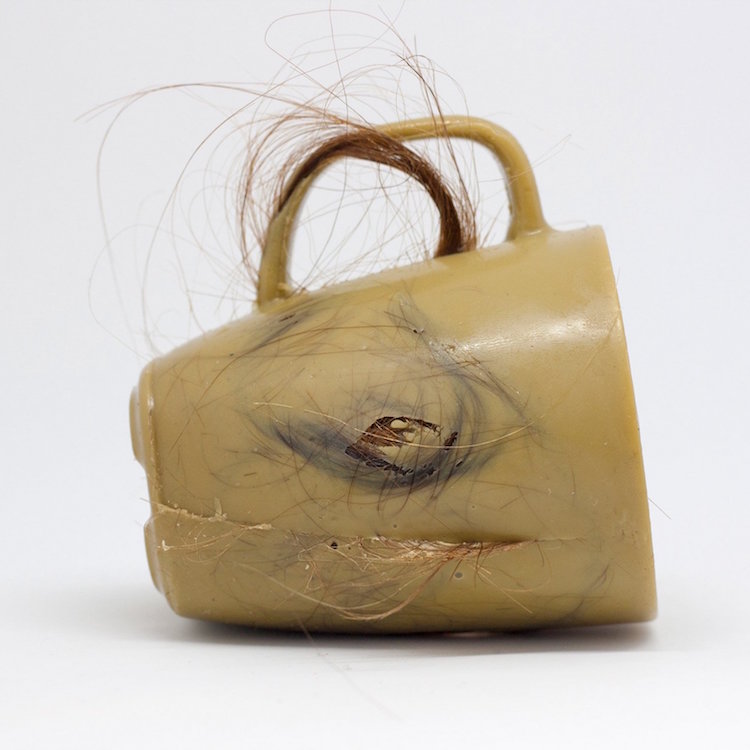Ensuring you’ll always triple check your coffee mug for foreign objects, Hungarian designer Krisztina Czika has embedded human hair into cosmetic wax (read: the leg, underarm and bikini hair removal kind) formed mugs in the shape of an IKEA design.
Dezeen writes Czika harvested hair from four donors, including herself, to make 15 mugs. Czika told the publication she named the collection This Is Not A Värdera, after the ubiquitous IKEA cups.
“Materials that are readily available and require the input of the human body creates a new way of perceiving even an IKEA mug.”

Photograph by Margherita Soldati. Click for larger image
Using a silicon mold to shape the mugs, Czika would first insert human hair before filling it with hot wax. The mugs take half an hour to cool down and an additional few days to completely dry and smooth out yielding a fragile as glass form not intended for everyday use. Czika explains her work is an ongoing exploration into using such an endless material as hair.
Her explorations have included shaving her own head and spinning it into a ball of thread.
“Human hair and cosmetic wax both have the qualities to be recycled, and contribute to an upcycled production that could be beneficial to our economy.” — Czika
The added fragrance in the cosmetic wax gives the mugs a “pleasant” smell, Czika said, though she admits that most people’s first reaction is of disgust.
“When they take it in their hands and smell it, the first question is always, ‘Can you drink from it?’’, and I am eager to ask back, ‘Would you like to drink from it?'”
Do you love or loathe this work of contemporary ceramic-inspired design? We want to hear your thoughts in the comments.




Useing human hair to add to anything is weird. How many people have actually bought one of your mugs.? All i can ask is Why??????
this is art not a product of consumption, so you need to see it and think of it as a work o art not a saleable object. I think that what the artist is talking about is the materials of mass production and how an abundant and generative material like human hair could be incorporated in this process to ” contribute to an upcycled production that could be beneficial to our economy”. Even if taken to the extreme like in this case, where the original object loses all his purpose, it’s just an idea to think and discuss.